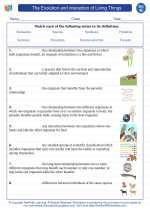Soil
Soil is a complex mixture of minerals, organic matter, and living organisms that forms the top layer of the Earth's surface. It plays a crucial role in supporting plant growth, regulating water flow, and providing habitat for a wide range of organisms.
Composition of Soil
Soil is composed of mineral particles, organic matter, water, and air. The mineral particles are categorized into three main types: sand, silt, and clay. The proportion of these particles determines the soil's texture and properties.
Formation of Soil
Soil formation occurs through the processes of weathering, erosion, deposition, and organic matter decomposition. Over time, rocks are broken down into smaller particles through physical, chemical, and biological weathering, leading to the formation of soil.
Soil Horizons
Soil is organized into layers called horizons. The O horizon consists of organic matter, the A horizon is topsoil rich in nutrients, the B horizon contains minerals leached from the topsoil, and the C horizon consists of partially weathered rock material.
Soil Conservation
Human activities such as deforestation, agriculture, and construction can lead to soil erosion and degradation. Practices such as contour plowing, terracing, and crop rotation help to conserve soil and prevent erosion.
Soil Testing and Analysis
Soil testing is essential for assessing its fertility, pH, nutrient levels, and composition. This information guides farmers and gardeners in making decisions about fertilization, crop selection, and soil management practices.
Study Guide
- Define soil and explain its importance.
- Describe the composition of soil and its main components.
- Explain the processes involved in the formation of soil.
- Discuss the different soil horizons and their characteristics.
- Identify and explain the factors leading to soil erosion and degradation.
- Describe various methods and practices for soil conservation.
- Explain the importance of soil testing and analysis for agricultural and environmental purposes.
Understanding the structure, composition, and importance of soil is crucial for sustainable agriculture, environmental conservation, and ecosystem management.
.◂Science Worksheets and Study Guides Eighth Grade. The Evolution and interaction of Living Things

 Worksheet/Answer key
Worksheet/Answer key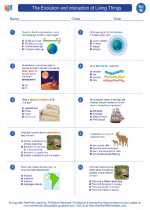
 Worksheet/Answer key
Worksheet/Answer key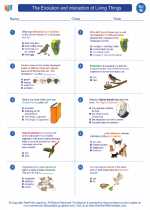
 Worksheet/Answer key
Worksheet/Answer key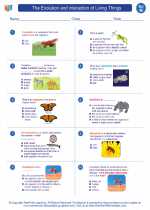
 Vocabulary/Answer key
Vocabulary/Answer key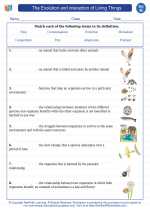
 Vocabulary/Answer key
Vocabulary/Answer key